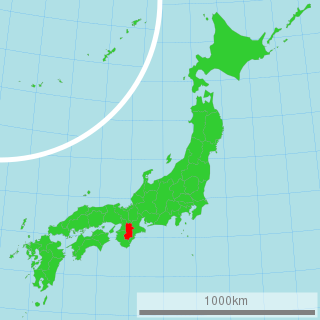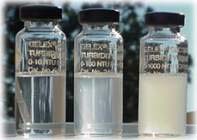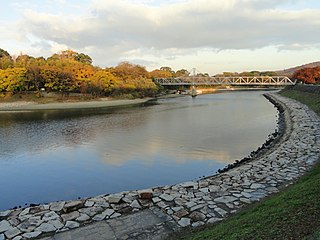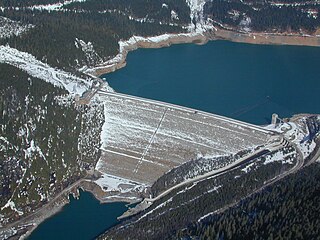
The Guangdong Pumped Storage Power Station or Guangzhou Pumped Storage Power Station is a pumped-storage hydroelectric power station near Guangzhou, Guangdong Province, China. Power is generated by utilizing eight turbines, each with a 300 megawatts (400,000 hp) capacity, totalling the installed capacity to 2,400 megawatts (3,200,000 hp). The generated power is sold to China Light and Power customers in Hong Kong. The power station was constructed in two stages, the first four turbines were completed in 1994 and the second four in 2000.

Tanbara Dam is a rock-fill embankment dam on a Tone River tributary in Gunma Prefecture of Japan. It is located 14 kilometres (8.7 mi) north of Numata. It creates the upper reservoir for the 1,200 megawatts (1,600,000 hp) Tamahara Pumped Storage Power Station (玉原発電所). Construction began in 1973 and the dam was complete in 1981 while the power station was commissioned in 1986. It is 116 metres (381 ft) tall and withholds a reservoir with a storage capacity of 14,800,000 m3 (11,999 acre⋅ft). Of that capacity, 13,000,000 cubic metres (11,000 acre⋅ft) is active for power generation. The lower reservoir for the pumped-storage power station is created by the Fujiwara Dam, located 4 km (2 mi) to the northwest on another Tone River tributary. Power is generated during periods of high energy demand and pumping occurs during times when energy demand is low such as at night. The power station contains four 300 megawatts (400,000 hp) reversible Francis turbine pump-generators which serve to both pump water and generate electricity. The upper Tamahara Reservoir is at an elevation of 1,177 metres (3,862 ft) and the lower Fujiwara Reservoir is at 651 metres (2,136 ft) which affords the power station an effective hydraulic head of 518 metres (1,699 ft). When pumping, the pump-generators can move up to 210 cubic metres per second (7,400 cu ft/s) of water and when generating, they discharge up to 276 cubic metres per second (9,700 cu ft/s).
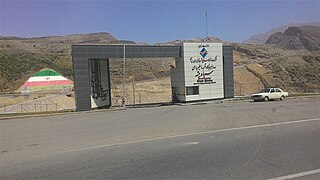
The Siah Bisheh Pumped Storage Power Plant, also spelled Siyāhbisheh and Siah Bishe, is located in the Alborz Mountain range near the village of Siah Bisheh and 48 km (30 mi) south of Chalus in Mazandaran Province, Iran. The power plant uses the pumped-storage hydroelectric method to generate electricity during periods of high energy demand, making it a peaking power plant, intended to fulfill peak electricity demand in Tehran 60 km (37 mi) to the south. When complete it will have an installed generating capacity of 1,040 megawatts (1,390,000 hp) and a pumping capacity of 940 megawatts (1,260,000 hp). Planning for the project began in the 1970s and construction began in 1985. It was delayed from 1992 until 2001 and the first generator went online in May 2013. The remaining generators were commissioned by 1 September 2015. The power plant is the first pumped-storage type in Iran and will also use the country's first concrete-face rock-fill dam – two of them.

The Kannagawa Hydropower Plant (神流川発電所) is an under construction pumped-storage hydroelectric power plant near Minamiaiki in Nagano Prefecture and Ueno in Gunma Prefecture, Japan. The power plant utilizes the Minamiaiki River along with an upper and lower reservoir created by two dams, the upper Minamiaiki Dam and the lower Ueno Dam. The power station in between the two dams will contain six 470 megawatts (630,000 hp) pump-generators for a total installed capacity of 2,820 megawatts (3,780,000 hp). Unit 1 commenced commercial operation in 2005 and Unit 2 in 2012. When completed, the plant will have the second-largest pumped-storage power capacity in the world.

The Tianhuangping Pumped Storage Power Station is a pumped-storage power station in Tianhuangping, Anji County of Zhejiang Province, China. The power station has an installed capacity of 1,836 megawatts (2,462,000 hp) utilizing 6 reversible Francis turbines. Construction began in 1993 and the power station was completed in 2004.

The Shin-Takasegawa Pumped Storage Station (新高瀬川発電所) uses the Takase River to operate a pumped storage hydroelectric scheme about 12 kilometres (7.5 mi) west of Ōmachi in Nagano Prefecture, Japan. Part of the system is within Chūbu-Sangaku National Park.
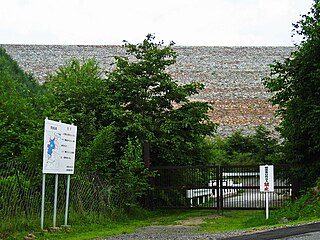
The Kazunogawa Pumped Storage Power Station is a pumped-storage hydroelectric power station near Kōshū in Yamanashi Prefecture, Japan. The station is designed to have an installed capacity of 1,600 megawatts (2,100,000 hp) and three of the four 400 megawatts (540,000 hp) generators are currently operational, for a total operational capacity of 1200 MW. Construction on the power station began in 1993 and the first generator was commissioned on 3 December 1999. The second was commissioned on 8 June 2000. The third on become operational on 9 June 2014, six year early due to post-power demand from the Great East Japan earthquake. The fourth and final generator is slate to be commissioned by 2024. It is owned by TEPCO and was constructed at a cost of $2.2 billion USD.
The Bailianhe Pumped Storage Power Station is a pumped-storage hydroelectric power station located 58 kilometres (36 mi) east of Huanggang in Hubei Province, China. It was constructed between 2004 and 2010 and has a 1,200 megawatts (1,600,000 hp) installed capacity. The power station operates by shifting water between an upper and lower reservoir to generate electricity. For this project, only the upper reservoir had to be created as an existing reservoir, the Bailianhe Reservoir, was used as the lower. During periods of low energy demand, such as at night, water is pumped from Bailianhe Reservoir up to the upper reservoir. When energy demand is high, the water is released back down to the lower reservoir but the pump turbines that pumped the water up now reverse mode and serve as generators to produce electricity. The process is repeated as necessary and the plant serves as a peaking power plant.
The Baoquan Pumped Storage Power Station is a pumped-storage hydroelectric power station located 34 kilometres (21 mi) northeast of Jiaozuo in Henan Province, China. It was constructed between June 2004 and December 2011 and has a 1,200 megawatts (1,600,000 hp) installed capacity. The power station operates by shifting water between an upper and lower reservoir to generate electricity.

The Entracque Power Plant, also known as The Upper Gesso Plant, is a pumped-storage hydroelectric power station located in Valle Gesso just south of Entracque, Italy. The power station contains pump-generators for two co-located but hydraulically separated power schemes; the Chiotas-Piastra Plant and Rovina-Piastra Plant. Both plants use separate upper reservoirs but use Lago della Piastra as their common lower reservoir. To produce power, water is released from the upper reservoirs to the power station located at the lower reservoir. The pump-generators re-fill the reservoirs and the process repeats as needed. The Chiotas' upper reservoir, Lago del Chiotas, is located much higher in the valley and larger than Rovina's Lago della Rovina which affords it the ability to produce more electricity. The installed capacity of Chiotas is 1,184 megawatts (1,588,000 hp) with a hydraulic head of 1,048 m (3,438 ft) while Rovina has an installed capacity of 133.67 megawatts (179,250 hp) and a head of 598 metres (1,962 ft). Construction on the plant began in 1962 and operations started in 1982. It is owned and operated by Enel.
The Heimifeng Pumped Storage Power Station is located at the hills of Heimifeng, Qiaoyi town, Wangcheng district, 25 kilometres (16 mi) north of Changsha in Hunan province, China. It was constructed between 2005 and 2009 with the generators being commissioned in 2009 and 2010. The station generates power by transferring water between an upper and lower reservoir. When energy demand is high, water from the upper reservoir is released and used to generate electricity before being discharged into the lower reservoir. During times of low demand, water from the lower reservoir is then pumped back up to replenish upper reservoir. This process allows the station to meet peak energy demand and it can go from standstill to operational in three minutes.
The Hohhot Pumped Storage Power Station, also known by Huhehaote, is located 20 kilometres (12 mi) north of Hohhot in Inner Mongolia, China. It uses the pumped-storage hydroelectric method to generate electricity. The plant has an installed capacity of 1,224 megawatts (1,641,000 hp). Construction began in 2005 and the first generator was commissioned on 20 November 2014. The second generator was commissioned on 26 December 2014 and the final two were commissioned in June 2015.

The Imaichi Dam (今市ダム) is a concrete gravity dam on the Togawa River located 4 kilometres (2.5 mi) west of Nikkō in Tochigi Prefecture, Japan. The dam serves as the lower reservoir for the 1,050 megawatts (1,410,000 hp) Imaichi Pumped Storage Power Station, while the Kuriyama Dam forms the upper. It is owned by TEPCO and was constructed between 1979 and 1986. The reservoir can store 9,100,000 cubic metres (7,400 acre⋅ft) of water. Of that storage volume, 6,200,000 cubic metres (5,000 acre⋅ft) can be used for power generation.
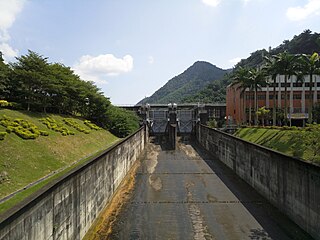
The Minghu Dam (Chinese: 明湖水壩; pinyin: Mínghú Shuǐbà, renamed the Takuan Dam, is a concrete gravity dam on the Shuili River located 7 km north of Shuili Township in Nantou County, Taiwan. The reservoir formed by the dam serves as the lower reservoir for the Minhu Pumped Storage Hydro Power Station. Sun Moon Lake serves as the upper reservoir.

The Matanoagawa Dam (俣野川ダム) is a concrete gravity dam on a tributary of the Hino River located 2.3 km (1 mi) south of Kōfu in Tottori Prefecture, Japan. Construction on the dam began in 1978 and it was complete in 1984. The primary purpose of the dam is hydroelectric generation and it creates the lower reservoir for the Matanoagawa Pumped Storage Power Station (俣野川発電所). It is 69.3 metres (227 ft) tall and creates a reservoir with a 7,940,000-cubic-metre (6,440 acre⋅ft) storage capacity. The power station is located on the southern bank of the reservoir and contains four 300 megawatts (400,000 hp) Francis pump-turbine-generators. The upper reservoir for the pumped-storage scheme is created by the Doyo Dam located 6 kilometres (3.7 mi) to the southeast in Okayama Prefecture. To generate power, water from the Doyo Dam is sent to the power station, used to generate electricity and then discharged into the Matanoagawa Reservoir. This occurs when energy demand is high and when it is low, water is pumped back up to the Doyo Dam as stored energy. The same pump-generators that pump the water to Doyo reverse and generate electricity when it is sent back down. The first generator was operational in 1992 and the last in 1996.

The Edolo Pumped Storage Plant is located along the Oglio River just downstream of Edolo, Brescia Province in the Lombardy region of Italy. Using the pumped-storage hydroelectric method, it has an installed capacity of 1,000 megawatts (1,300,000 hp). Its generators were commissioned between April 1984 and November 1985. Lake Avio was previously completed in 1929 and Lake Benedetto completed in 1940.

The Vianden Pumped Storage Plant is located just north of Vianden in Diekirch District, Luxembourg. The power plant uses the pumped-storage hydroelectric method to generate electricity and serves as a peaking power plant. Its lower reservoir is located on the Our River, bordering Germany, and the upper is elevated above on the nearby Saint Nicholas Mountain. Construction on the plant began in 1959 and the first pump-generators were commissioned in 1962. A tenth pump-generator was installed in 1976 bringing the plant's installed generating capacity to 1,096 megawatts (1,470,000 hp). The plant generates an average of 1,650 gigawatt-hours (5,900 TJ) annually but of course consumes even more. Generally the efficiency of this energy storage method is around 70-80%. The plant is owned by Société Electrique de l'Our and RWE. Construction on an eleventh pump-generator began in 2010 and it is expected to be commissioned in 2013, which will bring the plant's installed capacity to 1,296 megawatts (1,738,000 hp).
The Xiangshuijian Pumped Storage Power Station is a pumped-storage hydroelectric power station located 29 kilometres (18 mi) southwest of Wuhu City in Sanshan District of Anhui Province, China. Construction on the power station began on 8 December 2006 and the upper reservoir dam was completed in October 2010. The first unit was commissioned on 1 December 2011 and the last on 17 November 2012. The power station operates by shifting water between an upper and lower reservoir to generate electricity. The lower reservoir was formed with the creation of the Xiangshuijian Lower Dam in a valley. The Xiangshuijian Upper Reservoir is in another valley above the west side of the lower reservoir. During periods of low energy demand, such as at night, water is pumped from Xiangshuijian Lower Reservoir up to the upper reservoir. When energy demand is high, the water is released back down to the lower reservoir but the pump turbines that pumped the water up now reverse mode and serve as generators to produce electricity. The process is repeated as necessary and the plant serves as a peaking power plant.
The Tongbai Pumped Storage Power Station is a pumped-storage hydroelectric power station located 6 kilometres (3.7 mi) north of Tiantai city in Tiantai County of Zhejiang Province, China. Construction on the power station began in May 2000 and the first unit was commissioned in December 2005. The remaining three were operational by December 2006. The entire project cost US$904.10 million, of which US$320 million was provided by the World Bank. The power station operates by shifting water between an upper and lower reservoir to generate electricity. The lower reservoir was formed with the creation of the Tongbai Lower Dam on the Baizhang River. The Tongbai Upper Reservoir, which already existed before construction began, is in an adjacent valley above the east side of the lower reservoir on Tongbai Creek. During periods of low energy demand, such as at night, water is pumped from Tongbai Lower Reservoir up to the upper reservoir. When energy demand is high, the water is released back down to the lower reservoir but the pump turbines that pumped the water up now reverse mode and serve as generators to produce electricity. The process is repeated as necessary and the plant serves as a peaking power plant. The power station is operated by Shenergy Company.
The Yixing Pumped Storage Power Station is a pumped-storage hydroelectric power station located Yixing city of Jiangsu Province, China. Construction on the power station began in 2003 and the first unit was commissioned in 2007, the last in 2008. The entire project cost US$490 million, of which US$145 million was provided by the World Bank. The power station operates by shifting water between an upper and lower reservoir to generate electricity. The lower reservoir was formed with the existing Huiwu Dam at the foot of Mount Tongguan. The Yixing Upper Reservoir is located atop Mount Tongguan which peaks at 530 metres (1,740 ft) above sea level. During periods of low energy demand, such as at night, water is pumped from Huiwu Lower Reservoir up to the upper reservoir. When energy demand is high, the water is released back down to the lower reservoir but the pump turbines that pumped the water up now reverse mode and serve as generators to produce electricity. Water from the nearby Huangtong River can also be pumped into the lower reservoir to augment storage. The process is repeated as necessary and the plant serves as a peaking power plant. The power station is operated by East China Yixing Pumped Storage Co Ltd.

